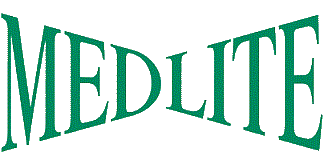10 Steps to Success
For Implementing Speech Recognition Technology
 In order to successfully move from a current legacy system to one that incorporates speech technology, the following ten steps should be taken into consideration.
In order to successfully move from a current legacy system to one that incorporates speech technology, the following ten steps should be taken into consideration.
1 – Outline measurable objectives to be achieved.
It is important to set specific goals on what you want to achieve such as a percentage of change in a system process in a set amount of time. In addition, be sure to indicate how these goals will be measured.2 – Determine Your ROI success indicator.
When determining what the goal is for an improved ROI, again it is important to be specific and identify a goal that has a measurable criterion. An example of this would be a goal to reduce the amount of outsourcing for transcription within a set amount of time.3 – Secure top-level management support.
Securing the support of top-level management benefits the project in three ways. First, by reinforcing the importance of the project; secondly, demonstrates management’s long-term commitment to the project; and thirdly, management is able to obtain additional recources, if needed, or help in resolving any issues that may arise.4 – Make sure all users are on board and involved in the process.
Acceptance of the new technology by the end users is key to the initial success of the implementation. Involving physicians and transcriptionists in the selection and deployment of the technology and getting their input and feedback will greatly improve the overall acceptance of the technology.5 – Assign a technical and functional system administrator.
An administrator on both the technical side and the user management side should be assigned to oversee the project planning process to help ensure the project stays on track to become a success.6 – Make sure end users understand the key benefits.
In order to combat any resistance to change, it is important to emphasize to physicians and transcriptionists the benefits that they will gain from the new technology. In addition, all stakeholders need to agree upon the importance of the improvements and each improvement needs to be stressed as a key objective in the project.7 – Align MT compensation.
Transitioning to speech technology represents a major change for transcriptionists. For this reason, in order to get the best results in implementing speech technology it is important to make sure that transcriptionists are appropriately compensated for their new responsibilities.8 – Develop an operationsl plan in advance.
According to the AHIMA article Best Practices for Using Speech Recognition, there are three primary areas involved in developing an operational plan. The first area consists of recommendations to improve the existing documentation process. The more efficient the existing documentation process is the higher the rate of success will be in transitioning to speech recognition technology. The second area consists of process changes necessary in order to transition to the new technology. Processes may need to be modified or new process created in order to get the most out of the new technology. The third area consists of determining what is the best method and time allotted for transitioning to the new speech recognition technology. Optional scenarios may be proposed along with the pros and cons of each scenario.9 – Keep all involved updated and informed.
A clear strategy is needed in order to create an environment of acceptance among physicians and transcriptionists. This strategy should include demonstrations on how the key objectives for each group are being met, meetings with managment and end users to keep everyone updated on the progress of the transition project, and once the system has gone live, continue to emphasize the benefits to the end users.10 – Set your benchmarks before actual deployment.
Preset benchmarks will allow for gauging success, provide justification to top-level management, proof to users of benefits obtained and create incentives to adopt technology in a timely fashion. <br\>Resource: http://library.ahima.org/xpedio/groups/public/documents/ahima/bok1_022110.hcsp?dDocName=bok1_022110
